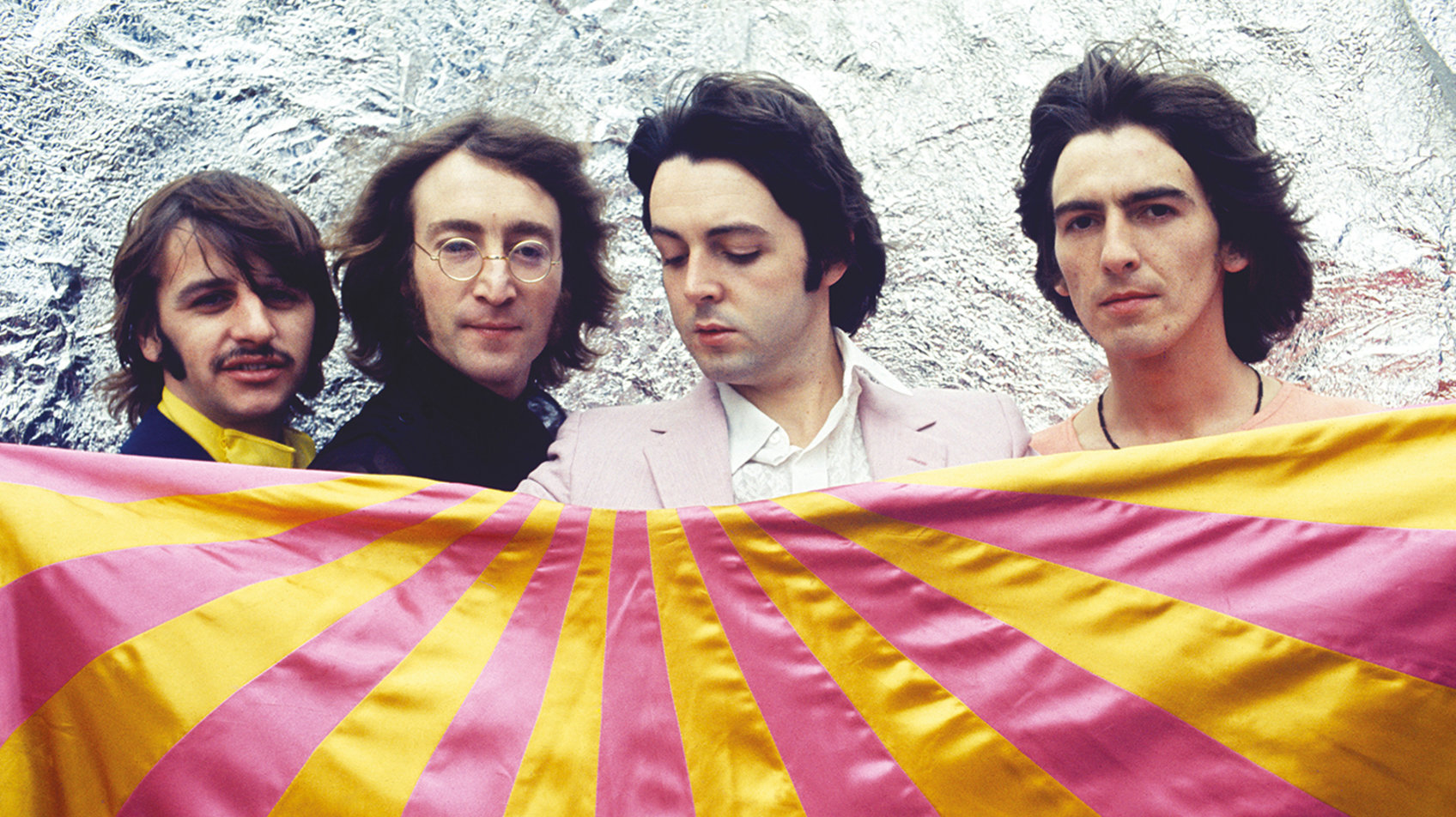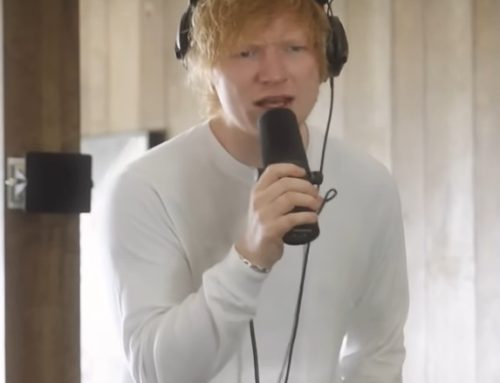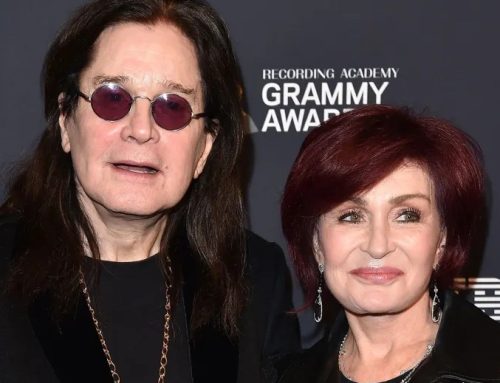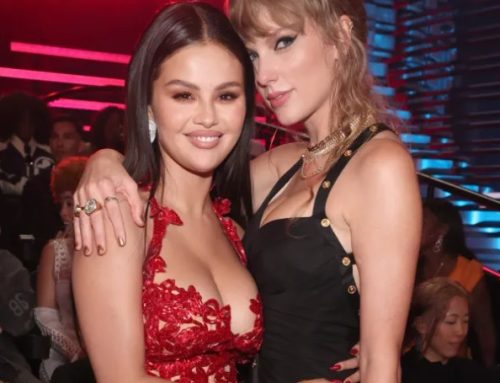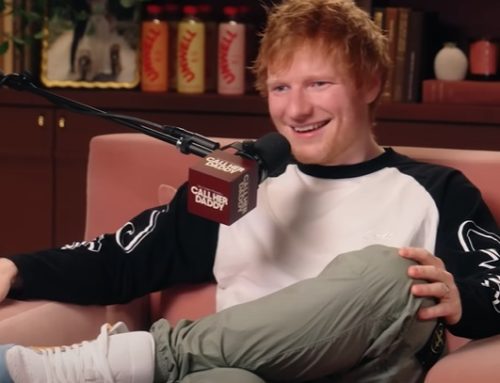Fifty years ago today (Nov. 22, 1968), the Beatles released their double LP classic The Beatles. Colloquially known as the White Album, it’s either their magnum opus or four solo albums in one depending on who you ask, but one thing is for certain – it’s an LP that changed popular music and still inspires fierce critical disagreement five decades later (with the illuminating 50th anniversary edition that dropped Nov. 9 providing further fuel for discussion). On the album’s anniversary, here are all the tracks from Paul McCartney, John Lennon, George Harrison and Ringo Starr ranked from worst to best.
30. “Wild Honey Pie”
While the under-one-minute “Wild Honey Pie” helps set up the ‘anything goes’ spirit of the White Album as the double LP’s fifth track, there’s just no getting around the fact that the wigged out guitar chords and yowling McCartney vocals are plain irritating after several listens. It adds flavor, sure, but it’s one you want to spit out politely when the chef has turned away.
29. “Revolution 9”
It’s hard to understate the cultural impact and importance of the biggest rock/pop band of the ’60s forcing the public to sit through eight minutes of musique concrète in 1968. It’s too bad, then, that this is not good musique concrète. With none of the hypnotism of a Karlheinz Stockhausen experiment or layered complexity of a Pierre Schaeffer collage, the end result comes across more like ‘The Fabs Get Arty’ than an impressive composition that rewards repeated listens. Like “Wild Honey Pie,” the music doesn’t back up the concept. The 50th anniversary edition of the White Album presents a ten-minute version of “Revolution 1” that wraps with a few minutes of tape loops that would eventually be expanded into “Revolution 9,” suggesting an alternate reality where the Beatles grounded their avant inclinations in the structure of a malleable rock song and created a thrilling concrète coda instead of a concrete chore.
28. “Savoy Truffle”
Not a bad treat by any stretch of the imagination – the lively brass section is especially savory — but it’s obvious that had the Beatles sliced this double LP down to one disc, “Savoy Truffle” would’ve been the first lightweight number to get canned. But this also speaks to how peerless the Beatles were at this point – their filler was twice as lively as most bands’ throwaway songs.
27. “Martha My Dear”
You can’t reasonably expect a music hall-indebted song named after a sheepdog to be the standout track on any album, and sure enough, “Martha” is jaunty, affable and disposable. It wouldn’t be until Wings’ “Jet” that Paul would create a true classic named after a pooch.
26. “Good Night”
One of two Ringo lead vocals on the White Album, this stately lullaby came from Lennon’s pen for Starr to croon at the close of the 93-minute album. While it’s a cute sequencing touch to put what might as well be a Disney tune after eight minutes of “Revolution 9” experimentation, it doesn’t save “Good Night” from being a sweet but slight entry in the Fab Four’s catalog.
25. “Revolution 1”
Not as exhaustingly pretentious as “Revolution 9” or as unfettered and vital as “Revolution” (the searing hard rock version that appeared as the “Hey Jude” b-side), “Revolution 1” – with its hazy strumming and lazy shoo-be-doos – is a great composition that suffers from a lackadaisical delivery. When Lennon asserts “You know it’s gonna be alright,” he sounds less like a fired-up counterculture seer and more like a zonked out junkie repeating platitudes.
24. “Sexy Sadie”
Disillusioned by Maharishi Mahesh Yogi after the Beatles spent time with him in India in February 1968, Lennon penned this scathing kiss-off to the religious guru. The lyrical barbs are sharp, but the ambling ivories and backup la-la-la’s fail to match the punch of the lyrics. Still, it has an alluring bitterness that sticks with you.
23. “Yer Blues”
The plodding “Yer Blues” demonstrates that the Beatles didn’t excel at composing blues tunes. But this one benefits from a searing, muddy guitar solo at the song’s end. Whether this song is a cry for help, sly parody or some combination, the grungy authenticity of the jam at the end justifies its presence on the White Album.
22. “Why Don’t We Do It In the Road?”
As much a dirty joke as a rhetorical cosmic question, “Why Don’t We Do It In the Road?” is a straightforward piece of twelve-bar blues that doesn’t overstay its welcome. The song itself is fine, but it’s McCartney’s flamboyant vocal – alternating between a falsetto yelp and a growly challenge – that makes “Road” a fucking good time.
21. “Birthday”
Not McCartney’s best piano-pounding homage to Little Richard, “Birthday” is nevertheless a breathless, unpretentious jolt of soda fountain sugar that tips to where the Beatles came from even as the bulk of the White Album revealed their (divergent) futures.
20. “The Continuing Story of Bungalow Bill”
Similar to “Rocky Raccoon” with its fixation on blustering American masculinity, “Bungalow Bill” is a serviceably catchy folk sing-along that benefits immensely from a theatrical vocal from Lennon (and a hilarious assist from Yoko Ono) as he cheekily skewers a gun-toting mama’s boy.
19. “Don’t Pass Me By”
The sole Ringo Starr songwriting credit on the White Album (and his first solo writing credit), the bones of the countrified “Don’t Pass Me By” are solid enough, but it’s the performance that sells this song. Ringo is amiable as ever singing this lovelorn lament as a perky piano pounds out its thunderous chords and a bluegrass violin brings in the ’50s honky-tonk flavor that Starr loved so much.
18. “Long, Long, Long”
Coming after the ear-shattering “Helter Skelter,” Harrison’s ethereal vocal seems almost inaudible. But listen closely and you’re rewarded with one of the most yearning, affecting vocals in George’s Beatles tenure. And with the delicate church organ fluttering beneath the heavy drums, which crash in like unexpected waves on an empty shore, it’s a fascinating quiet-loud-quiet exercise years before that became a trend.
17. “Mother Nature’s Son”
An effortlessly lovely pastoral folk gem like “Mother Nature’s Son” would be a standout entry in most artists’ catalogs; for the Beatles, it’s not even in the top half best tracks on the White Album. But with acoustic guitar picking clear as a mountain stream and a brass section with the gentle majesty of a glowing sunrise, “Son” is an example McCartney’s evocative simplicity speaking volumes.
16. “Piggies”
Half acerbic, half cheeky, all baroque, “Piggies” is a refreshing sonic outlier on the White Album, with George Harrison employing animal grunting noises and a sparkling harpsichord for a smirking social satire that, at two minutes, hardly overstays its welcome. It might not be subtle, but there’s enough humor in the delivery (“what they need’s a damn good whacking!”) that “Piggies” remains a squeal.
15. “Cry Baby Cry”
Like “Long, Long, Long,” the simmering instrumentation in “Cry Baby Cry” remains restrained throughout this underappreciated White Album track that features Lennon’s vibrato, nursery rhyme-inspired lyrics, George Martin on harmonium (Nico’s weapon of choice), and a strange coda from McCartney in the form of a lonely sketch of a song.
14. “I Will”
In the hands of a lesser songwriter (hell, in the hands of McCartney himself if you catch him on an off day), “I Will” could’ve been a saccharine, fluffy filler song. But McCartney’s melodicism on this under-two-minute track is disarmingly direct, piercing through cynical shields by virtue of its sonic purity. Even if you’re the kind of person who doesn’t believe in true love, you believe true love exists for people like Paul after hearing this song.
13. “Honey Pie”
Of all the Beatles, it’s clear McCartney could’ve been a hitmaker regardless of the era he was born into. Here, he effortlessly nails British music hall (what Americans call vaudeville) and Cole Porter-style standards with a loving pastiche that captures that era’s fondness for oddball rhymes (frantic/Atlantic) and vocal quirks (note the strange tremble in his voice in the “play it to me honey” lyric, something often deployed by male singers in the 1920s). Despite being lightweight by design, “Honey Pie” is actually a more substantial composition than most of the songs on The Beatles.
12. “Everybody’s Got Something to Hide Except Me and My Monkey”
The Esher demo on the 2018 reissue confirms that, yes, this is an above average song that’s launched into the stratosphere by one hell of a monster riff. But what a riff. Although Lennon denied the monkey in question was heroin, there’s no getting around the fact that the angular riff that opens this song is as sharp and brutal as any needle. And once that triangle starts in with its screaming peals, it’s like you’re rushing down a hill with no brakes.
11. “I’m So Tired”
By 1968, Lennon was increasingly enamored with his new love Yoko Ono and increasingly dispirited by everything else in his life, from the Beatles to meditating in India. With “I’m So Tired,” he turned his spiritual ennui into a highly relatable ode to insomnia and romantic fixation. The pounding, exhausted chorus hammers home his single-mindedness while the sluggish, languid delivery of the verses conveys the waking dream that life without Yoko had become for him. And while Beatles fans probably weren’t expecting a Sir Walter Raleigh slam when they urged the Fab Four to get more political in the late ’60s, you gotta smirk at the randomness of that hot take.
10. “Back In the U.S.S.R.”
The impact has certainly been diluted over time, but “Back In the U.S.S.R.” is brilliant homage to and subversion of the Beach Boys and Chuck Berry — instead of celebrating the clean-cut American teen, McCartney extols the virtues of the Soviet Union and keeping your comrade warm at the height of Cold War tensions. But what makes “U.S.S.R.” explode are the relentless, pummeling performances the Beatles give on the White Album opener. As that rocket screams from above, Macca attacks the keys like Little Richard while Harrison rips off a searing guitar solo. And on those backup woo-oohs, the Fab Four actually sounds like they’re having fun – perhaps for the only time on this album.
9. “Dear Prudence”
White Album songs have some pretty strange back stories, but this one — written by John about coaxing Mia Farrow’s reclusive sister Prudence out of her room while on a meditation retreat in India – is certainly the weirdest. But cute pop culture trivia aside, “Dear Prudence” is simply one of the most gorgeous pieces in the Beatles’ catalog, from the resplendent, ringing guitar tone to the lush backing vocals to the transcendent climax that crashes in on the final chorus.
8. “Rocky Raccoon”
A convoluted Raccoon tale involving a love triangle, a drunk doctor, vengeance in the Old West and Gideon’s Bible, “Rocky” operates as an expert parody of the circuitous folk story-songs popular in the ’60s as well as a convincing homage to the country-folk sounds of the American West, complete with George Martin tickling a honky-tonk piano and McCartney adopting a not-terribly-convincing cowboy accent (in his defense, he’s had to endure 50-some years of inept Liverpool accents from Americans). For an album that covers heady personal and political themes, “Rocky Raccoon” provides the White Album with an appropriately off-kilter sense of levity.
7. “Blackbird”
Inspired by the civil rights movement in America, J.S. Bach and a literal blackbird singing, McCartney’s stark folk anthem is disarming in its unadorned simplicity and the directness of the metaphor. “Take these broken wings and learn to fly / All your life / You were only waiting for this moment to arise” is simple enough that a child could understand, but it’s such an affecting image that even after countless listens, it resonates. It’s hard to write political songs that don’t age immediately (cf. Wings’ “Give Ireland Back to the Irish”), and “Blackbird” is a master class in avoiding that pitfall.
6. “Glass Onion”
Exploding out of the gate with Ringo’s snare drum bashing, “Glass Onion” doesn’t relent from its propulsive psych-rock attack until George Martin’s disorienting strings take over at the end. In between, Lennon sounds positively gleeful as he ribs Beatles super fans desperate to uncover hidden meanings in the Fab Four’s forays into psychedelia on their previous albums. But instead of sounding bitter, the punk sneer in his voice and the razor sharp guitars ensure “Glass Onion” is an exhilarating two-minute blast of pent-up satire.
5. “Julia”
For a writer as cynical and cagey as Lennon, the blunt emotional candor of “Julia” remains jaw-dropping even 50 years later. A lilting folk meditation on his unresolved feelings toward his mother, who had a complicated relationship with her son before dying in 1958, “Julia” remains a heartbreaking declaration of love to a mother he felt abandoned by as a child. The gentle finger-picking style of guitar playing emphasizes the solitary tone of the song; as sublime as this melody is, Lennon sounds irrevocably alone as he delivers it.
4. “Ob-La-Di, Ob-La-Da”
Irritating to some (including Lennon), exhilarating to others, “Ob-La-Di, Ob-La-Da” is a lightning bolt of McCartney optimism distilled into a three-minute rush of handclaps, bongos, maracas, falsetto adlibs and a clanging piano that sounds straight out of an Old West saloon. While many British rockers embarrassed themselves with diet soda versions of reggae music in the ’70s, McCartney smartly avoiding imitating the genre outright; instead, he drew on the buoyancy of ska for the elastic bass on “Ob-La-Di, Ob-La-Da” and allowed the nascent genres to inform his existing palette. Toss in an accidental gender swap in the lyrics, some canned laughter and Macca’s impassioned shouting on the final chorus, and you get one of the most deliriously fun numbers in the Beatles’ catalog. While most rock songs are about the thrill of first love or the hedonistic release of partying, McCartney somehow makes domestic life sound like the greatest pleasure of all.
3. “Helter Skelter”
Recorded when Black Sabbath was in its infancy and a few scattered bands like Blue Cheer were making tentative steps in the creation of heavy metal, it’s astonishing to think the Beatles – a pop band at heart – created one of the genre’s proto classics. Even more surprising is the fact that Paul, the Cute Beatle with a fondness for silly melodies, was the driving force behind this pummeling sonic assault. Aside from the spiky guitar riff that mesmerizes while it has you reaching for earplugs, “Helter Skelter” predicts the sludgy, punishing tonality of heavy metal at a time when most proto metal bands were veering closer to meandering psych-rock or bluesy riffing. It’s an exercise in extremes that pays off: With McCartney screaming like a demon, Ringo hitting the drums like a caveman and not one but two fake endings, “Helter Skelter” left blisters on Ringo’s fingers but paved the way for an entire genre of music.
2. “Happiness Is a Warm Gun”
Opening with obtuse poetic musings about window-gazing lizards and lecherous soap eating, Lennon’s three-part mini epic was inspired by a direct quote from a troubling advertisement he saw. While it’s more a satire of gun culture than a metaphor for drugs, the middle portion is sung from the perspective of a junkie while a snarling guitar roars like a sedated but angry wild animal. But the incendiary third segment is the clear apotheosis. While the aching backup vocals offer up a moaning bloodlust, a raving Lennon extrapolates on the orgiastic release of sex, violence and the temporary illusion of safety engendered by, well, either shaft unloading. It’s far closer to the confused, fragmented world J.G. Ballard would depict two years later in The Atrocity Exhibition than James Bond opening credits woman-as-gun fetishizing. And when Lennon hits that final falsetto, it’s one of the most glorious, harrowing moments in music history.
1. “While My Guitar Gently Weeps”
During the recording of the White Album, George Harrison was well on his way toward serious spiritual and musical maturation. Unfortunately for him, the two driving creative forces in the Beatles weren’t too keen on either, regularly undervaluing his compositions and expressing plenty of disdain for the meditation trip to India, which they found far less enlightening than he had (Harrison had to talk Lennon out of making “Sexy Sadie” a direct hit piece on the Maharishi). Out of that comes “While My Guitar Gently Weeps,” George’s I Ching-inspired lament over the untapped love and harmony being diverted, perverted and inverted in our world. Dripping with a sobering sense of spiritual isolation and desolation, Harrison turns to his guitar as an outlet for his frustrations, hopes and tears. With Eric Clapton providing some uncredited assistance on the axe and Lennon adding a tremolo-laden guitar bit at the end, you better believe the guitars on “Guitar” sound like they’re weeping – not just for George, but for the dormant creative potential in all of us. It’s George’s finest moment in the Beatles, and the clear standout on an album rich with G.O.A.T. classics.

